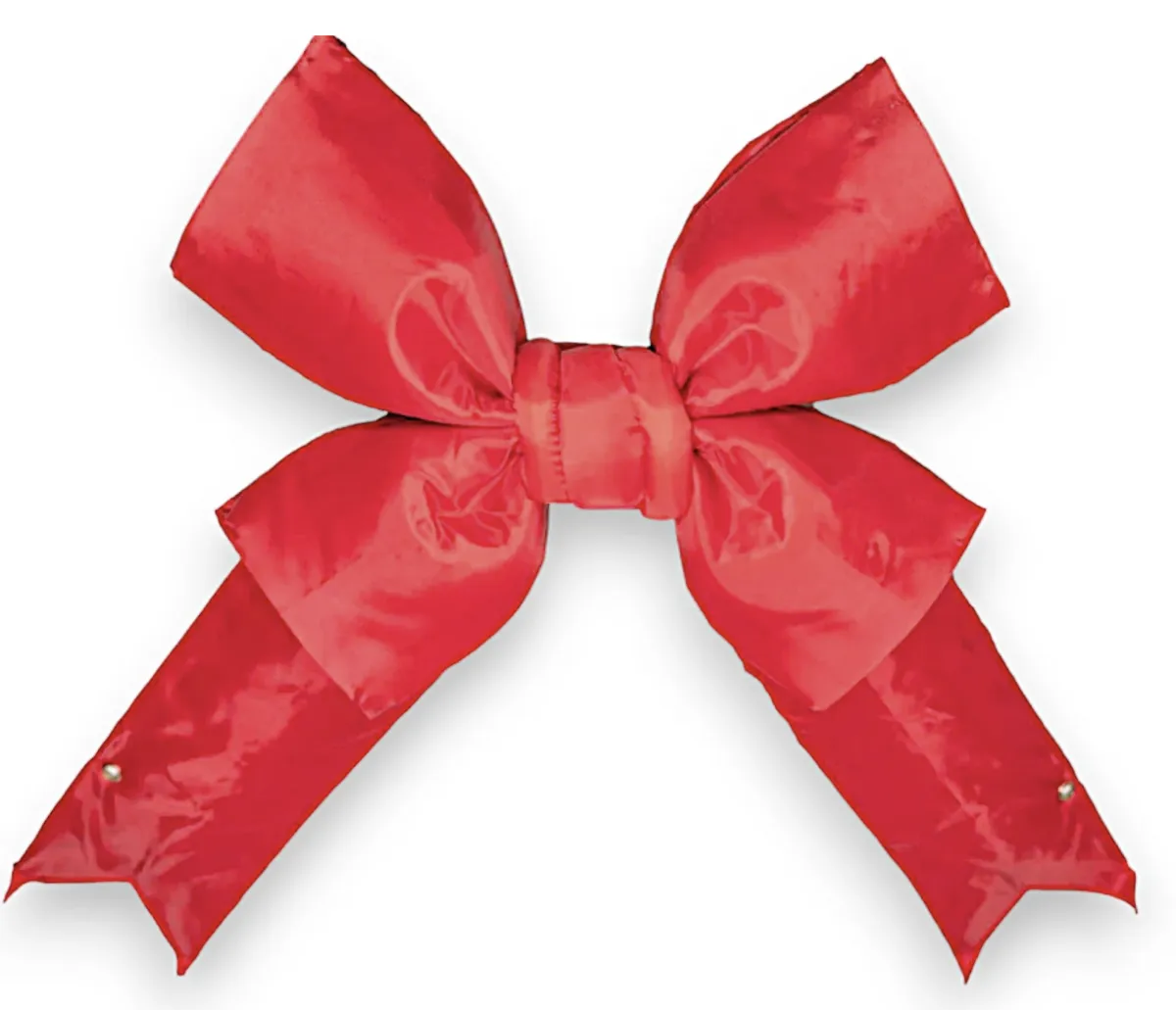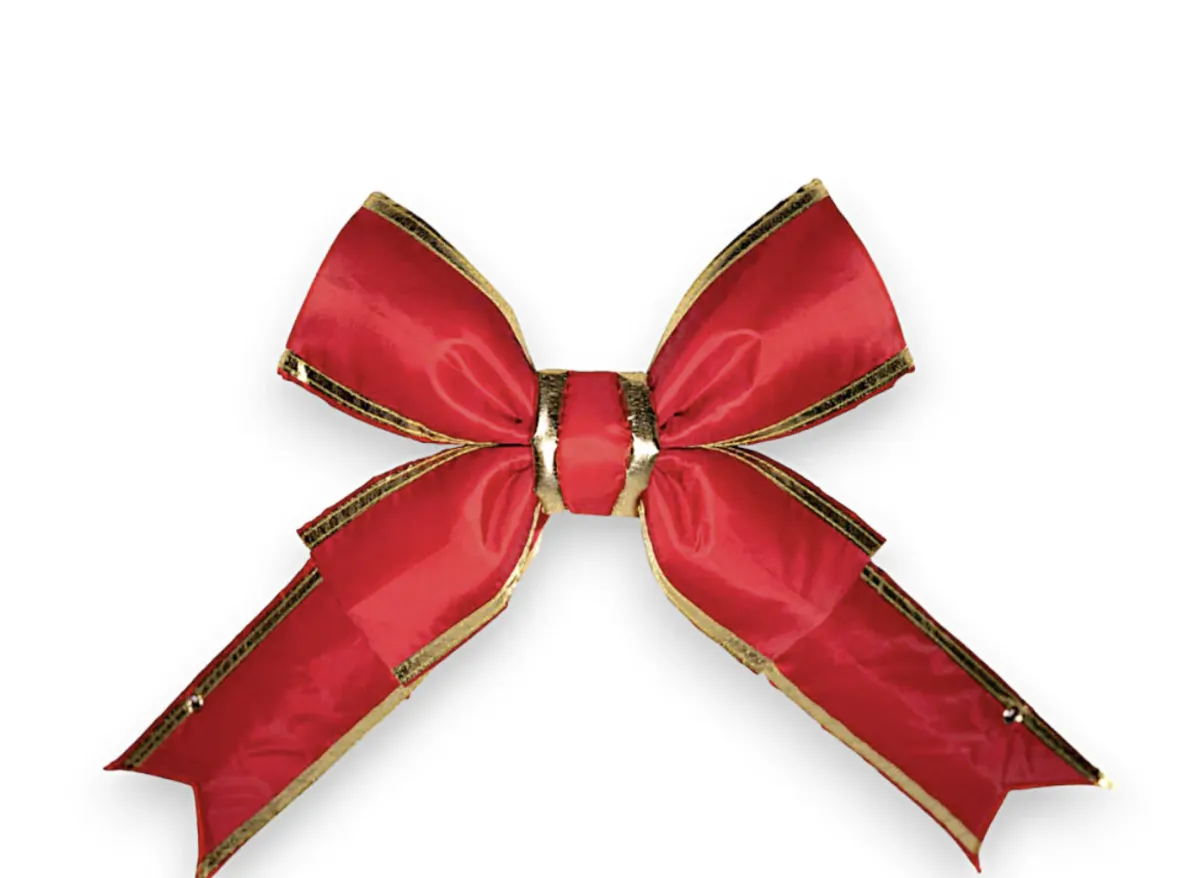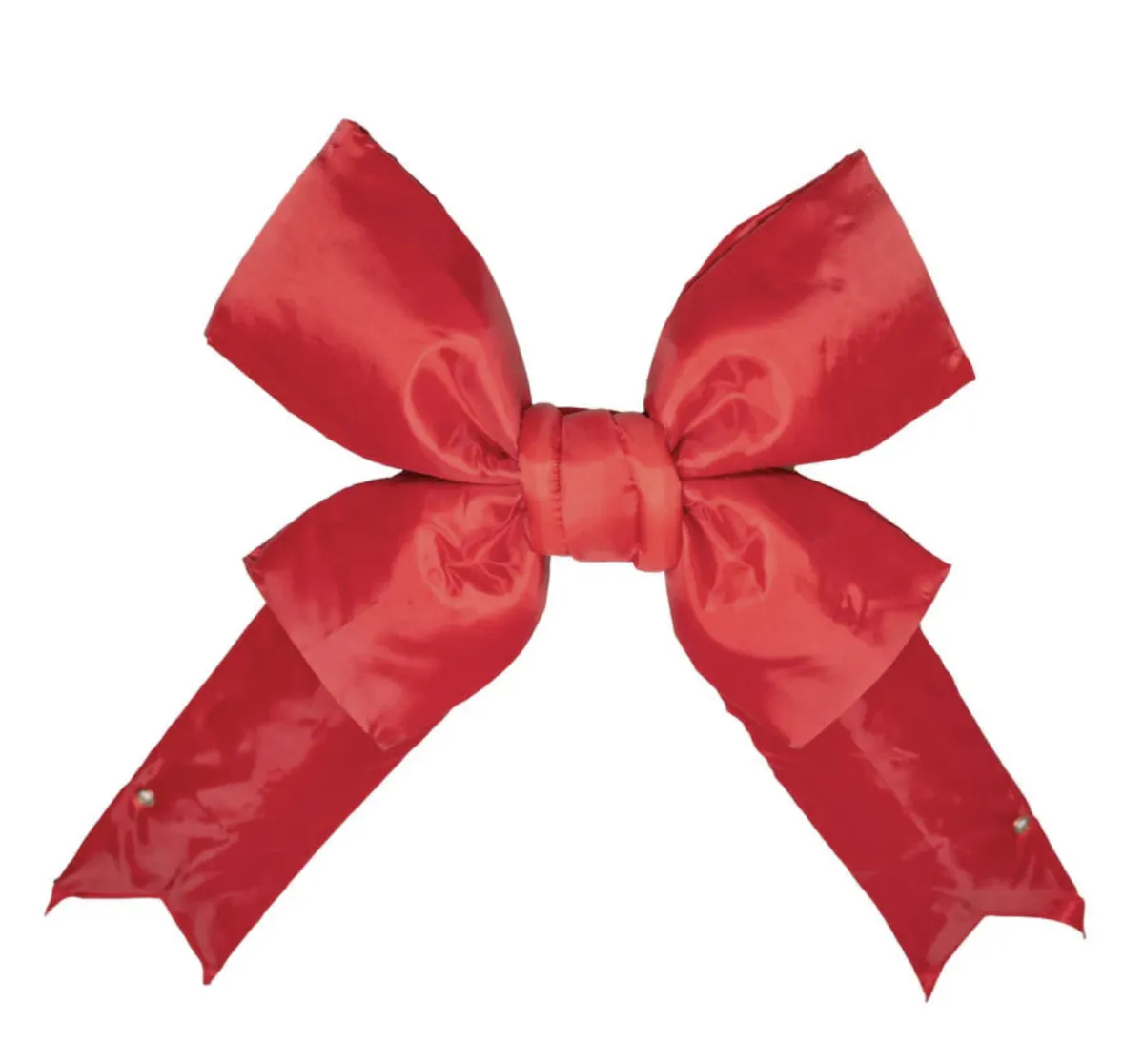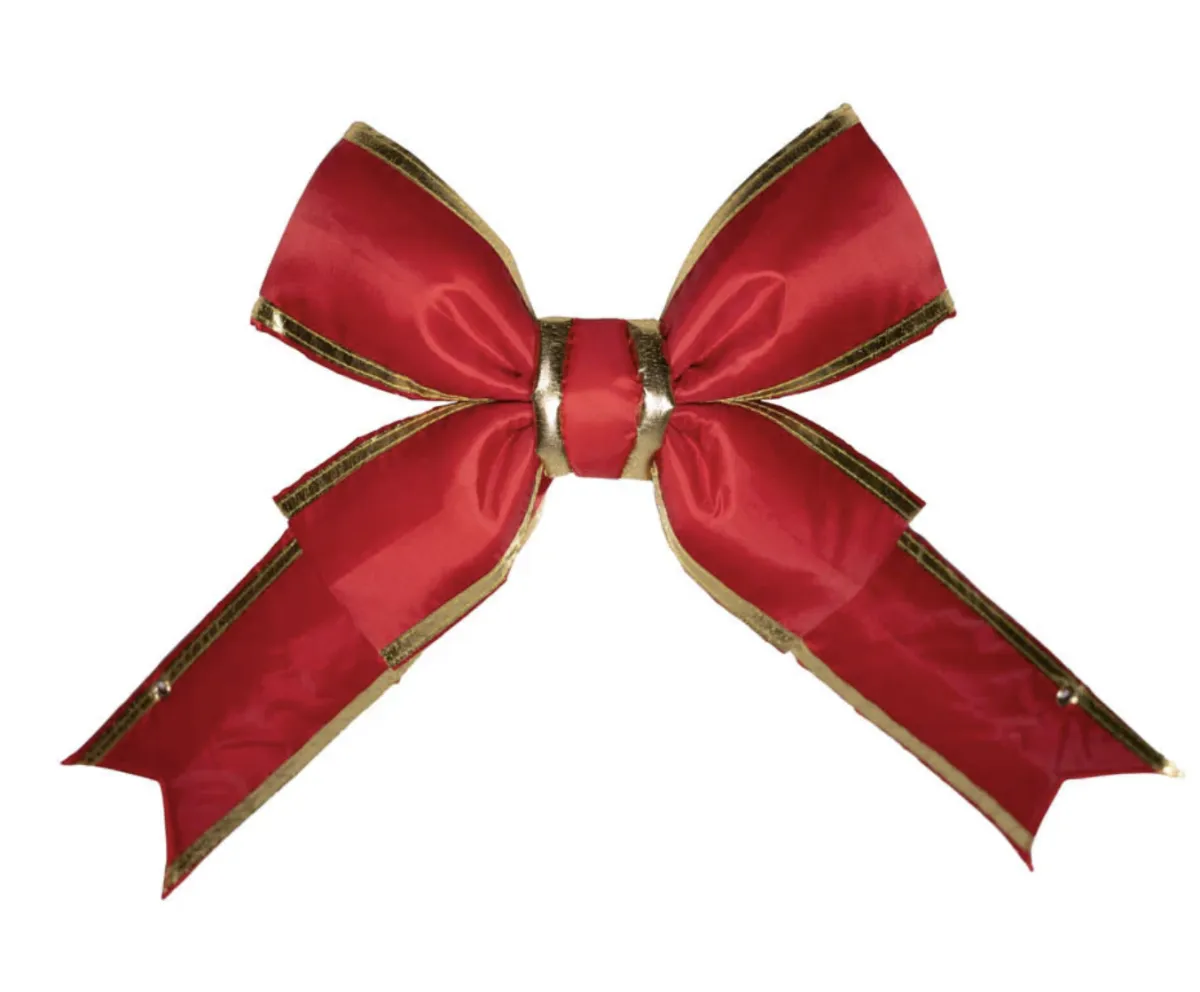Christmas Bows:
Timeless Holiday Elegance
Christmas bows are a quintessential holiday decoration, offering both simplicity and beauty to festive displays. These versatile accents can enhance both interior and exterior spaces, adding a cheerful touch to various holiday arrangements. The image of a vibrant red bow crowning a lush green wreath has become an iconic symbol of Christmas decor, embodying traditional holiday charm. Whether used as a standalone accent or as part of a more elaborate display, Christmas bows effortlessly infuse any setting with seasonal spirit, making them an indispensable element in creating warm and inviting holiday atmospheres.
Christmas Bows
Choosing the right Christmas bow can elevate your holiday decorations from good to great. When selecting a bow for your wreath, aim for one that's approximately one-third the size of the wreath itself – this proportion creates a visually pleasing balance. If you're adorning windows with festive bows, opt for suction cup hooks or specially designed adhesive hooks for easy, damage-free installation and removal. For outdoor displays, durability is key. Weather-resistant materials like polyester or nylon are your best bet, as they can withstand the elements while maintaining their vibrant appearance throughout the season. By considering these factors – size, attachment method, and material – you can ensure your Christmas bows add that perfect touch of holiday cheer to your decorations, both inside and out.
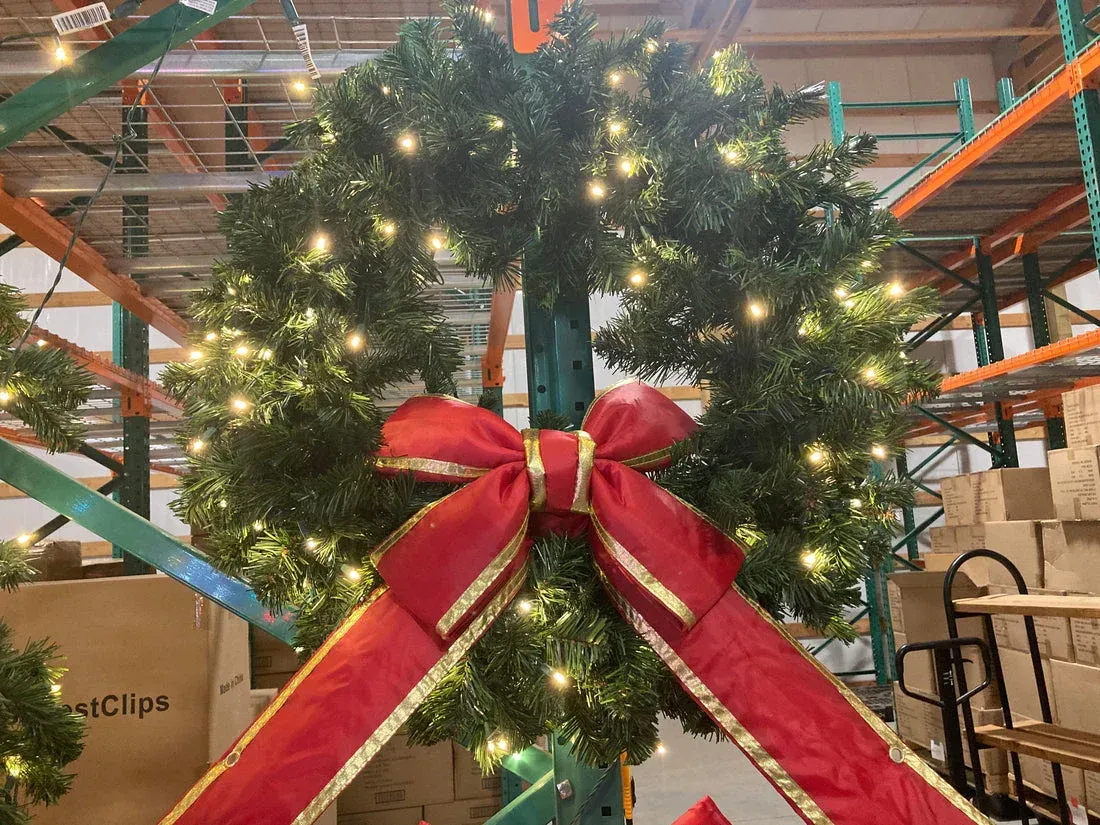
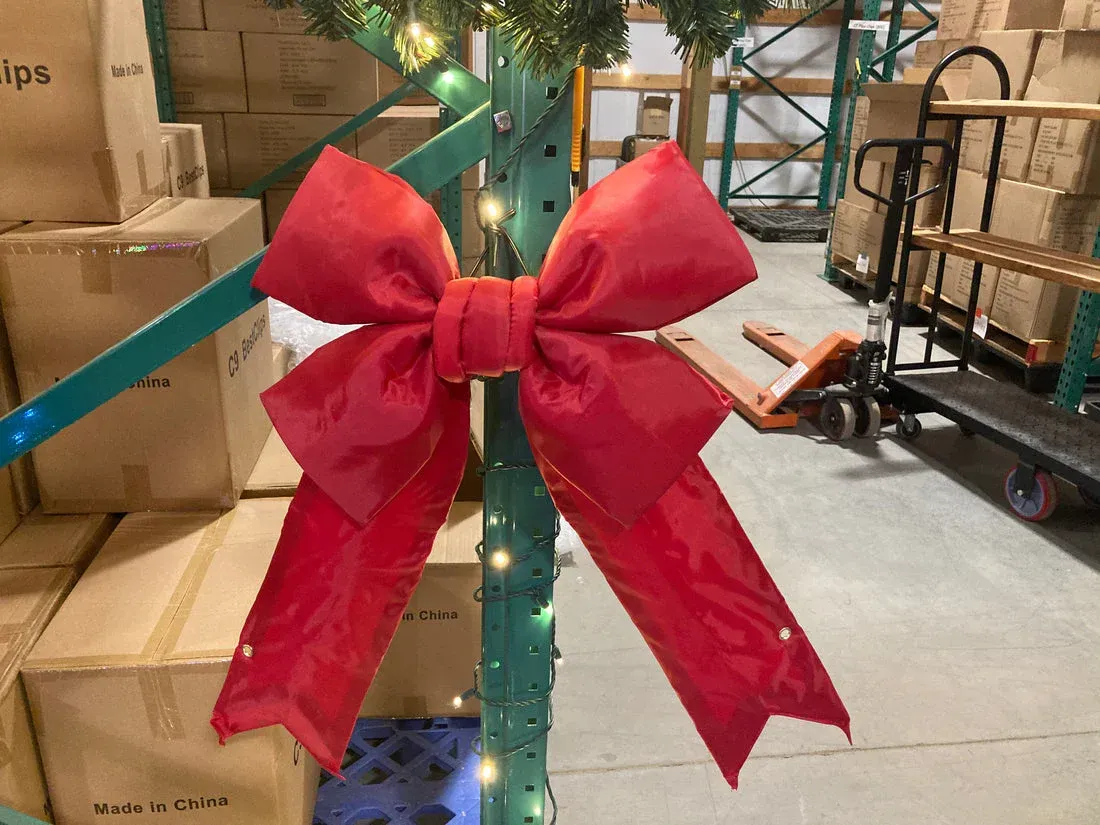
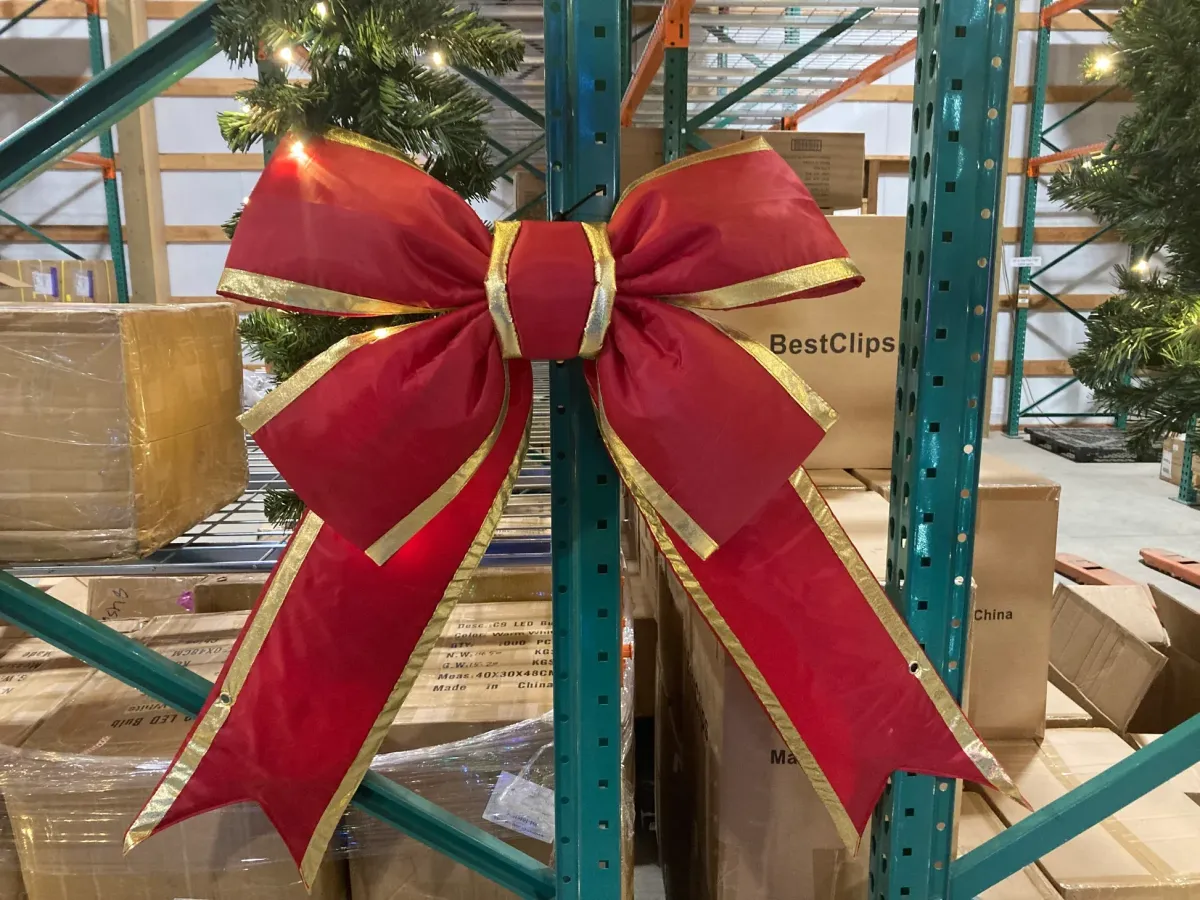
Elevate your holiday decor
with perfectly placed Christmas bows.
Before installation, shape your bow using its internal wire, assembling puff bows if needed. Choose bow sizes proportional to your decorations: half the wreath's diameter, 15"-18" for garlands, and smaller sizes for large trees. For windows, use outdoor-rated suction cups or command hooks. Mantel bows (15"-24") can be secured with command hooks, while stair banisters welcome 15"-18" bows attached via the provided wire. Outdoor installations on fences or posts may require zip ties or bungee cords for extra security. Most bows come with attached, plastic-coated wire for easy, scratch-free installation on various surfaces. After the season, store bows in waterproof bins, disassembling puff bows for flat storage. With these tips, you'll create stunning bow accents that perfectly complement your Christmas displays, both indoors and out.

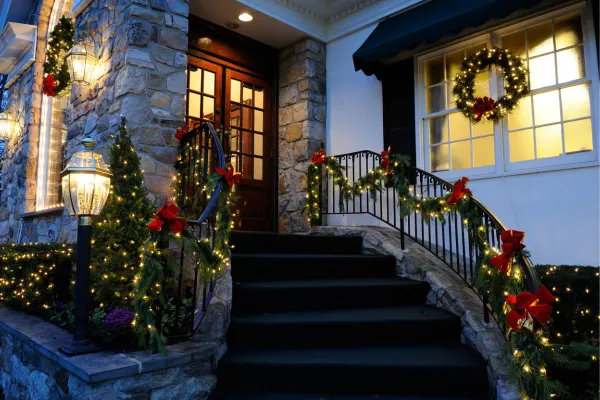
Frequently Asked Questions
What sizes of nylon bows do you offer?
We offer a variety of nylon bow sizes to suit different decorating needs. Our range includes 12", 15", 18", and 24" bows, ensuring you can find the perfect size for your project, whether it's for a wreath, a large outdoor display, or anything in between.
What colors are available for your nylon bows?
Our nylon bows come in classic holiday colors. We offer solid red bows for a traditional look, as well as red and gold combination bows for a more luxurious appearance. These color options allow you to easily match or complement your existing holiday decor.
Are your bows suitable for outdoor use?
Yes, our nylon bows are designed to withstand outdoor conditions. Nylon is a durable material that holds up well against various weather elements, making these bows perfect for both indoor and outdoor holiday decorations.
Can I use these bows for professional Christmas light installations?
Absolutely! Our nylon bows are of professional-grade quality, making them ideal for commercial and residential Christmas light installations. They add a polished, festive touch to any holiday display and are durable enough to last throughout the season.
How do I attach these bows to my decorations?
Our nylon bows are designed for easy attachment. They typically come with wire ties or loops that allow you to secure them to wreaths, garlands, light displays, or other decorations. For more permanent installations, you can also use zip ties or floral wire.
Can I mix different sizes of bows in my decorations?
Yes, mixing bow sizes can create visual interest and depth in your decorations. For example, you might use larger 24" bows as focal points on main doors or large wreaths, while using smaller 12" or 15" bows for accent pieces or smaller decorations. This variety can add a professional touch to your overall holiday display.
Discover Expert Tips on Our Blog
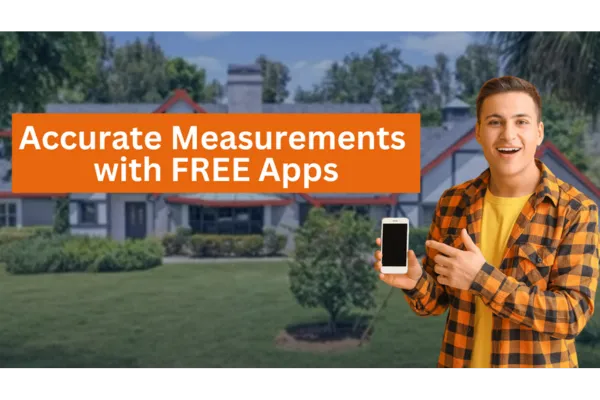
House Measurement Techniques for Accurate Bidding
When it comes to construction, renovation, or holiday decoration projects, accurate measurements are crucial. One wrong calculation can significantly impact your budget and timeline. Today, we'll explore three powerful free tools that help you measure buildings accurately from photos, ensuring your estimates are spot-on every time.
Why Accurate Measurements Matter
Consider this scenario: if you estimate a project at 140 feet when it's actually 200 feet, your cost calculations could be dramatically off. What started as $4 per foot might suddenly become $1 per foot, severely impacting your profit margins or project budget. This is why having reliable measuring techniques is essential for any contractor or DIY enthusiast.
Tool #1: ELEIF - The Professional's Choice
Measure in photo online ‐ eleif.net
ELEIF is a time-tested online measurement tool that offers precise calculations from photographs. Here's how to use it:
1. Upload your photo by dragging it into the interface
2. Set your reference measurement (typically a door width of 3 feet)
3. Use the measurement tool to mark key points along your structure
4. Record and add up all measurements
5. Add a 10% buffer for accuracy
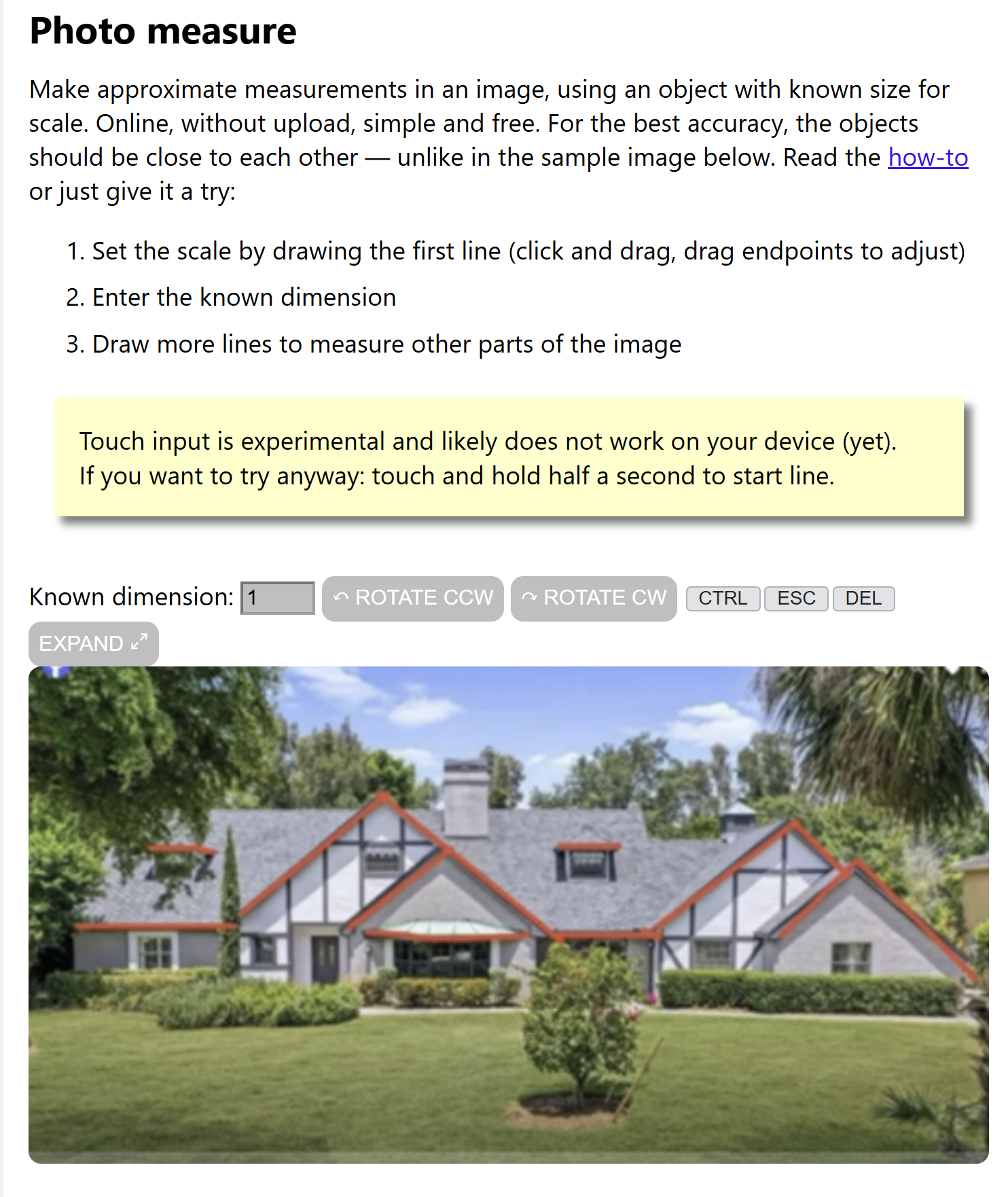
Pro Tip: When measuring complex structures, always account for architectural features that might not be immediately visible in the photo, such as door overhangs or roof extensions.
Tool #2: Image Measurement
This user-friendly tool offers enhanced zoom capabilities for more precise measurements:
1. Import your photo
2. Use the zoom function to get a clearer view
3. Set your reference point (again, using a door or known object)
4. Take measurements by clicking points along the structure
5. Calculate total measurements
6. Compare results with other tools for accuracy
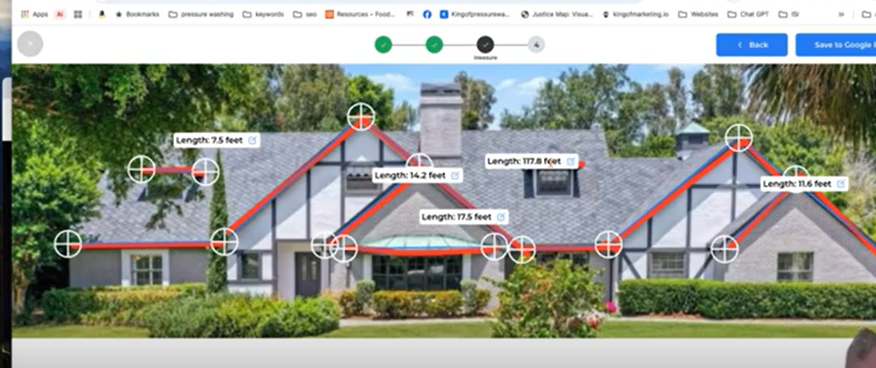
Tool #3: Canva - The Creative Solution
While primarily known for design work, Canva offers a surprisingly effective measurement solution:
1. Upload your photo to a YouTube thumbnail template
2. Use the ruler element tool
3. Set your reference measurement (3 feet for a standard door)
4. Duplicate and rotate the ruler to measure different sections
5. Track your measurements in increments (10 feet, 20 feet, etc.)
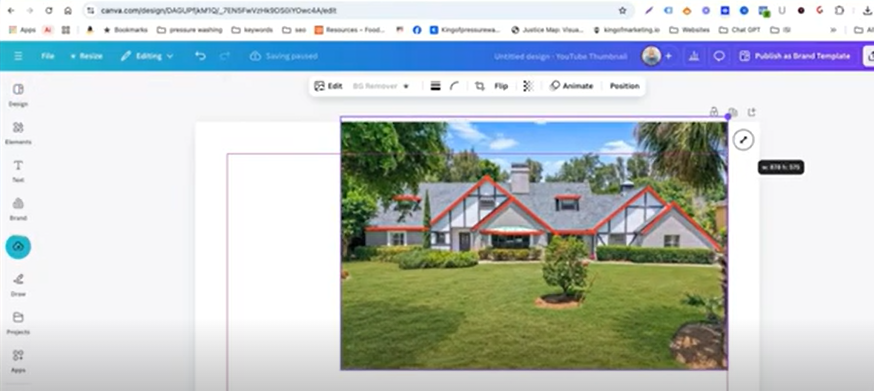
Best Practices for Digital Measuring
1. Use Known Reference Points
- Standard door width (3 feet)
- Garage doors (8 feet for single, 16 feet for double)
- Windows or other standard architectural features
2. Always Add a Buffer
- Include a 10% margin for error
- Account for hidden features not visible in photos
- Better to overestimate slightly than underestimate
3. Cross-Reference Your Results
- Use multiple tools to verify measurements
- Compare results between different methods
- Look for consistency in measurements
Common Pitfalls to Avoid
- Don't forget to account for:
- Door overhangs
- Architectural protrusions
- Roof extensions
- Corner details
- Changes in elevation
When to Use Which Tool
- ELEIF: Best for straight-line measurements and simple structures
- Image Measurement: Ideal for detailed work requiring zoom capability
- Canva: Perfect for quick estimates and visual reference points
Final Tips
1. Always verify your reference measurements
2. Take multiple measurements when possible
3. Document your process for consistency
4. Consider seasonal changes or structural variations
5. Keep records of your measurements for future reference
Remember, the goal isn't just to get a number – it's to get an accurate measurement that you can confidently use for project planning and execution. Whether you're a professional contractor or a DIY enthusiast, these tools can help you achieve precise measurements without stepping foot on the property.
Want to learn more about construction measurements and professional techniques? Visit ChristmasLights.io for additional resources and tips from industry experts.
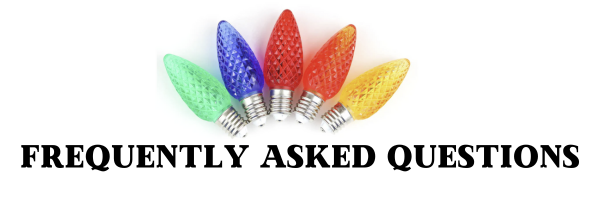
Q: Why should I use multiple apps to measure the same building?
A: Using multiple measurement tools helps verify your calculations and ensures accuracy. Each tool has its own strengths - for example, Image Measurement offers better zoom capabilities, while Canva provides easy-to-duplicate measurement units. By cross-referencing results between different apps, you can catch potential errors and arrive at the most accurate measurement.
Q: What's the best reference point to use when measuring from a photo?
A: The most reliable reference points are standardized building features:
- A standard door (3 feet wide)
- A garage door (8 feet for single, 16 feet for double)
- Standard windows
Always try to use the garage door as your first choice since it provides a larger reference point, which can lead to more accurate measurements across the entire structure.
Q: Why should I add 10% to my measurements?
A: Adding 10% serves as a safety buffer for several reasons:
- Accounts for hidden architectural features not visible in photos
- Compensates for potential measurement errors
- Covers unexpected protrusions or overhangs
- Ensures you have enough materials for the project
It's better to slightly overestimate than to run short on materials or underquote a project.
Q: Can these tools replace physical measurements?
A: While these digital tools are extremely helpful for initial estimates and remote measurements, they work best as complementary tools to physical measurements. For final, detailed work, it's still recommended to take physical measurements when possible. However, these apps are excellent for:
- Initial project estimates
- Remote quotes
- Preliminary planning
- Situations where physical access isn't immediately possible
Q: What can cause inaccurate measurements when using these apps?
A: Several factors can affect measurement accuracy:
- Using an incorrect reference point size
- Not accounting for perspective in photos
- Overlooking architectural features like overhangs
- Poor photo quality or angle
- Not considering depth in protruding features
To minimize errors, always use clear photos taken straight-on, verify your reference measurements, and cross-check results between different tools.
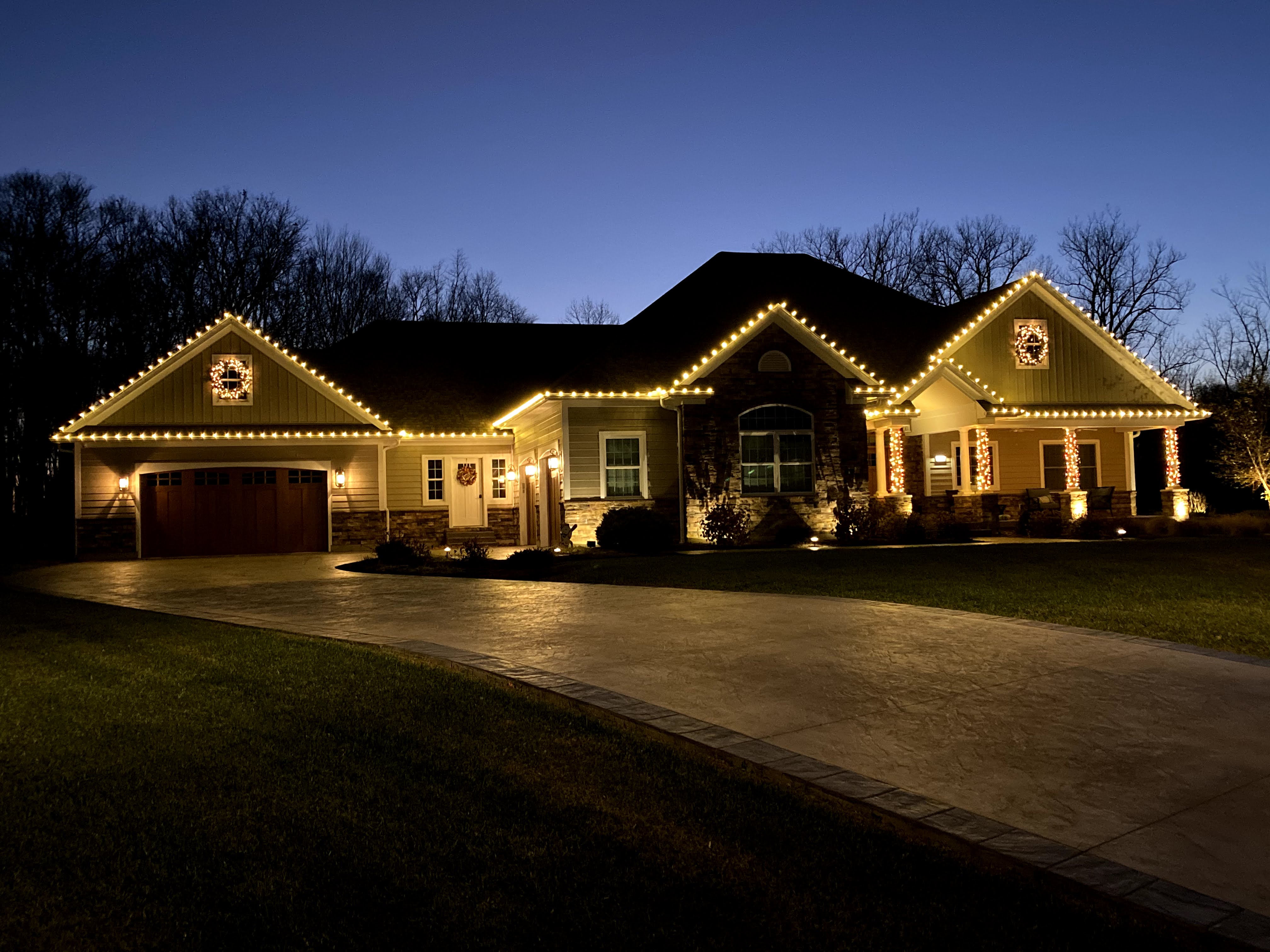
Q: Are these tools really free to use?
A: Yes, all three tools mentioned (ELEIF, Image Measurement, and Canva) offer free versions that include their measurement capabilities. While Canva does have a premium version, the measurement features discussed are available in the free version.
Q: How do I handle complex architectural features like bay windows or irregular shapes?
A: For complex features:
1. Break down the measurement into smaller, manageable sections
2. Measure each section individually
3. Account for depth and protrusions
4. Add extra buffer for irregular shapes
5. Consider taking multiple photos from different angles to better understand the structure
Q: What's the best way to document measurements for future reference?
A: Best practices for measurement documentation include:
- Take screenshots your measurements in each app
- Create a spreadsheet with all measurements and calculations
- Note which reference points were used
- Record the date and conditions of measurement
- Save the original photos used for measuring
- Document any assumptions or special considerations made
Q: How accurate are these digital measuring tools?
A: When used correctly with proper reference points and clear photos, these tools can be accurate within 5-10% of physical measurements. However, accuracy depends on:
- Quality and angle of the reference photo
- Accuracy of the reference point measurement
- Complexity of the structure
- User expertise in using the tools
This is why using multiple tools and adding a 10% buffer is recommended for professional estimates.
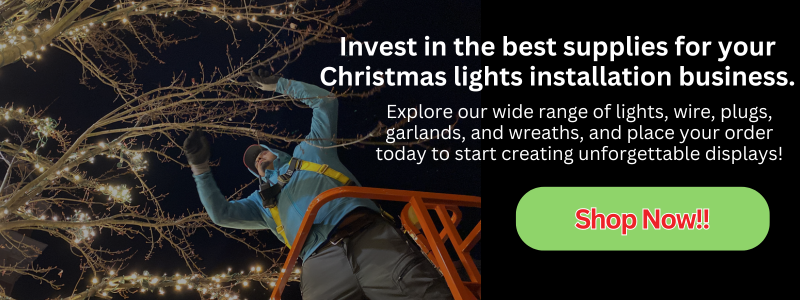
Have more questions about digital measuring techniques? Visit ChristmasLights.io for additional resources and expert guidance.
Copyright ©2025 All Right Reserved website designed by christmaslights.io
Terms of Service / Privacy Policy
Have questions or need assistance?
Contact us at (855)619-LITE


